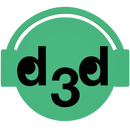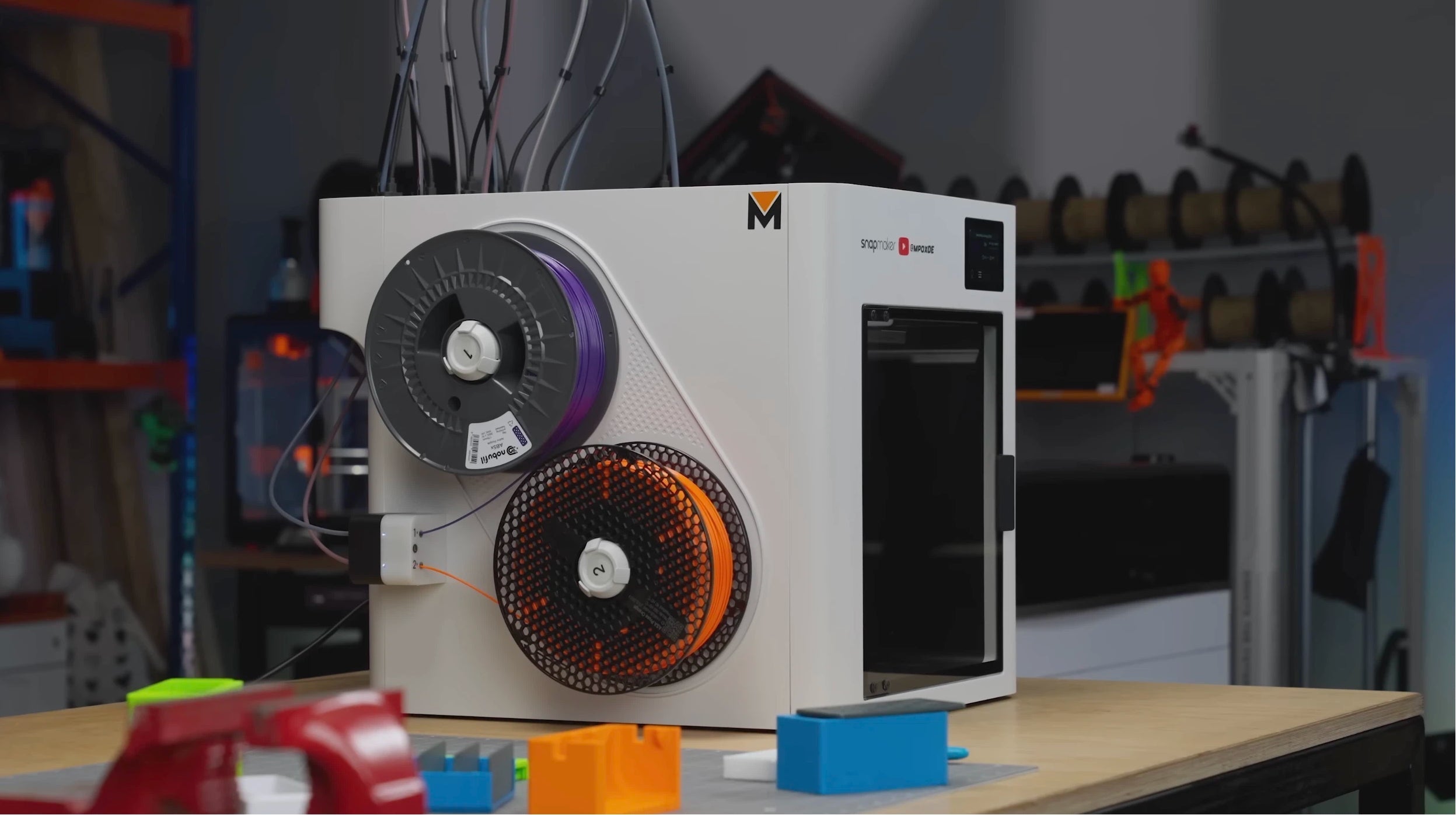Kate G. - April 22 2024
Sovol SV08 Review

Sovol has introduced several noteworthy printers, such as the SV04 IDEX printer capable of dual-color printing without waste. SV06, originally a PRA clone, the SV07, some users feel there was regression, particularly with the reintroduction of rubber wheels and leveling knobs. The Sovol SV08 is based on the Voron 2.4 design, a renowned open-source project. The Voron project provides detailed documentation and parts lists, allowing users to build their printers from scratch or purchase kits for assembly. While building a Voron typically takes 40-50 hours, Sovol claims the SV08 can be assembled in just one hour. This makes it an attractive option for those lacking time or experience with assembly. Comparing Voron to commercial Core XY printers like the Bambu Lab P1 serious printers, Voron boasts several advantages.
Notably, Voron's bed is positioned lower, enhancing stability and reducing vibrations during printing.
Additionally, Voron utilizes four independently driven stepper motors, offering superior precision compared to some commercial Core XY printers which may use a single motor with timing belts connecting lead screws. While lead screws theoretically provide stable movement, they can suffer from backlash and inaccuracies, especially when not properly lubricated.
Sovol SV08 Price
Formbot's Troodon 2.0 also leverages the Voron design but aims to make it more accessible to those not inclined to build a 3D printer from scratch. Preceding the SV08, the Troodon 2.0 builds on the success of earlier Voron kits by offering a mostly preassembled printer that requires minimal setup, thereby broadening its appeal.
Sovol SV08: Starts at $579, with an enclosed version and upgraded touchscreen retailing at $799.
Troodon 2.0: Priced at $1,050 with shipping included within the continental US. The Troodon also offers a mini version at $599, which is still more expensive than the SV08 despite being smaller.

Image credit to Youtuber @TheEdgeofTech
Sovol SV08 Assembly
Assembly of the SV08 is remarkably efficient, taking almost exactly an hour from start to finish, and can be accomplished by novices or experts alike. Compared with Troodon 2.0, which also advertised as one hour, actual assembly can take closer to three hours based on user reports.
1. The assembly process begins with a fully assembled and wired base, which arrives square and ready for the addition of corner pieces and a top plate. This ensures a solid foundation to build upon. The corner pieces are beautifully machined and pre-wired, contributing to the overall aesthetics and build quality.
2. The top plate is a single machined aluminum cap that securely locks the corners together, providing rigidity and ensuring the machine remains square.
Threaded holes are present around the sides and top for optional enclosure attachment, a feature likely to appeal to many users.
3. The Gantry employs a quad Z Motor design with damping motors to maintain levelness and prevent falling in case of power loss. This design allows for precise quad gantry leveling in all directions. Installation of the Gantry is straightforward, requiring insertion at an angle followed by tightening of two bolts in each corner to secure it in place.
Sovol SV08 Design
The build quality of the SV08 is fantastic, with a heavy and sturdy construction. It includes convenient handles engineered into the base, making it easier to move around—a useful feature for both professional settings and home use.
Additionally, the custom extrusions and machine components contribute to a premium feel, enhancing the overall user experience. The cable management is also commendable, with wiring neatly locked into extrusions and kept out of the way, minimizing clutter and potential hazards.
Lastly, the cooling system of the SV08 is highly effective, albeit a bit loud. However, the loudness is expected when moving a substantial amount of air. The cooling system performs admirably, resulting in excellent overhangs and bridging capabilities.
Open-sourced Firmware
If you're a proponent of open-source technology, you'll appreciate Sovol's commitment to open-source for the entire SV08 machine, along with their support for the Voron design team. With every purchase of the SV08, Sovol will be making a donation, showcasing their dedication to the cause. In fact, Sovol has already made a pre-donation ahead of sales to demonstrate their commitment, which is pretty cool.
Sovol SV08 Features
Mesh Leveling with Camp Technology
The Sovol SV 08 utilizes Camp technology for mesh leveling, ensuring precise adjustments only where necessary. This adaptive mesh leveling enhances print accuracy by optimizing leveling adjustments based on the print's specific requirements.
Induction Auto-Leveling and Auto Z-Offset AdjustmentWith induction auto-leveling, the printer achieves consistent and accurate bed leveling, complemented by an auto Z-offset adjustment mechanism located at the rear of the machine. These features streamline the calibration process, ensuring hassle-free setup and optimal print quality.
Custom Ceramic Cartridge-Style Hotend
Featuring a proprietary ceramic cartridge-style hotend with a maximum temperature of 300°C, the SV08 offers versatility in printing various materials. This hotend design provides reliable extrusion performance and thermal stability, contributing to consistent print quality.
AC-Powered Heat Bed with Flexible PEI Coated Sheet
The printer is equipped with an AC-powered heat bed capable of reaching 100°C maximum temperature, paired with a flexible PEI coated sheet. This combination offers excellent adhesion and easy print removal, facilitating smooth printing experiences.
· Large Build Volume and Z-Height
With a build bed of 350*350mm and Z-height of 345mm. This generous build volume accommodates a wide range of printing projects.
Sovol SV08: 350 x 350 x 345 mm. However, this may be reduced when enclosed, potentially making it comparable to the Troodon.
Troodon 2.0: 350 x 350 x 330 mm.

· User-Friendly Interface with HDMI Port
The SV08 features a user-friendly interface with a standard click wheel, offering intuitive navigation for users. Additionally, it includes an HDMI port for connecting an external display or interface, enhancing user experience and customization options.
Connectivity Options
Equipped with two USB type A ports, Ethernet, and Wi-Fi connectivity, the SV08 offers versatile connectivity options for seamless integration into various workflows. While the Wi-Fi configuration process may be unconventional, it provides flexibility for remote management and monitoring.
Orca Slicer Support and Klipper Firmware
Support for Orca Slicer profiles from day one ensures compatibility with popular slicing software, facilitating smooth printing experiences for users. The printer runs on Klipper firmware, enabling standard Klipper Remote Management via a web interface for convenient printer control and monitoring.
Built-in Camera for Monitoring
Featuring a built-in camera mounted under the gantry, the SV08 allows users to monitor prints remotely. This camera provides added convenience and peace of mind, enabling users to check on print progress and detect any issues in real-time.
Sovol SV08 Cons
Poor Quality Spool Holder
The spool holder included with the SV08 is of poor quality and prone to causing issues. It often leads to filament tangling and unspooling, disrupting prints. You'd better replace it with aftermarket spool holders for a more reliable printing experience.
Noisy Fan Operation
The power supply fan of the SV08 is excessively loud, making it bothersome for users sensitive to fan noise. While the noise might diminish over time, it remains a significant drawback.
Filament Loading
Filament loading can be problematic, with instances where the filament struggles to feed into the extruder. This issue may necessitate tapering the filament end more aggressively to facilitate loading, adding an extra step to the printing process.
Bed Adhesion
Bed adhesion on the SV08 is inconsistent, leading to print failures despite efforts to clean and prepare the build plate. But many users have found success with third-party bed adhesion solutions.
Discrepancies in Z-offset Calibration
The Sovol SV08 faces a notable issue related to the temperature sensitivity of its probe, which can affect print consistency. Inductive probes, in particular, are known to drift with temperature variations, causing discrepancies in Z-offset calibration between cold starts and subsequent prints. This phenomenon can result in Z-offset to probe differentials of half a layer height or more.
To mitigate this issue, several solutions are available. The first option is to always start the machine from a cold state, though this may not be practical for all users. The second solution involves modifying the start print macro to include a heat soak delay, allowing the probe to warm up consistently before probing. The third and preferred solution is to utilize a sensor at the back of the machine before each print to ensure consistent temperature readings.
This temperature sensitivity issue is more pronounced on the SV08 compared to other machines due to its mains powered heat bed, which heats up rapidly, providing insufficient time for the probe to stabilize. While this problem is not unique to the SV08 and has been observed in other printers, it is exacerbated by the rapid heating of the mains bed. Heat soaking, a common practice in the community, helps address this issue by allowing the probe sufficient time to stabilize before probing.Ultimately, users may need to experiment with heat soak durations to find the optimal balance between print consistency and heating time. Also, Sovol is aware of this issue and is working on resolving it through firmware updates.

Sovol SV08 Specifications
| 3D Printing Type : | FDM | Leveling Method : | inductive sensor + pressure sensor |
|---|---|---|---|
| Build Volume : | 350*350*345mm | LAN Connection : | Wi-Fi/ethernet port |
| Product Dimensions(spool holder excluded): | 550*537*575mm | Display Screen : | 12864 Knob Screen (5 inch touchscreen swappable) |
| Net Weight : | 17,7kg | Camera : | yes |
| Package Dimensions : | 615*595*335mm | Filament-runout Resume : | yes |
| Gross Weight : | 21.5kg | Enclosing Panels : | optional |
| Printing Speed: | s700mm/s | Lighting Kit : | yes |
| Acceleration : | ≤40000mm/s^2 | Rated Voltage : | 100-240 VAC, 50/60 Hz |
| Printing Accuracy : | 100+0.1mm | Rated Power: | 1000W@220V, 1000W@110V |
| Layer Height: | 0.08~0.36mm | Printable Filament : | PLA, PETG, TPU, PETG-CF, ABS (with enclosure panels), etc.. |
| Extruder : | planetary gear extruder | Printable File : | G-code |
| Filament Diameter : | 1.75mm | Slicing Software : | OrcaSlicer, Cura, PrusaSlicer, Simplify3d |
| Nozzle Diameter : | 0.4mm(0.2/0.6/0.8mm swappable) | System Architecture : | 64-bit |
| Flow Rate : | ≤30mm^ 3/s | CPU : | H616 (Quad-core ARM CortexTM-A53) |
| Nozzle Temperature : | ≤300℃ | RAM Size : | 1CB (512MB + 512MB) |
| Heatbed Temperature : | <100℃ | Flash Memory Size : | 8CB (EMMC) |
| Build Plate : | powder-coated PEl sheet | Stepper Driver : | TMC2209 |
| Language : | Chinese, English, French, German, ltalian, Japanese, Portuguese, Russian Spanish,Turkish | ||
Choose Sovol SV08 or Troodon 2.0
Choosing between the Sovol SV08 and the Troodon 2.0 depends on your specific needs:
Sovol SV08: Better for those seeking an affordable, ready-to-use printer with decent features but limited upgradeability.
Troodon 2.0: Ideal for users looking for a printer that remains closer to the Voron design, offering better upgrade paths and higher precision at a higher price.
Ultimately, your decision should reflect whether you prioritize cost and ease of setup (SV08) or compatibility with the original Voron ecosystem and future upgrade potential (Troodon 2.0).

Image credit to Youtuber @YGK3D



